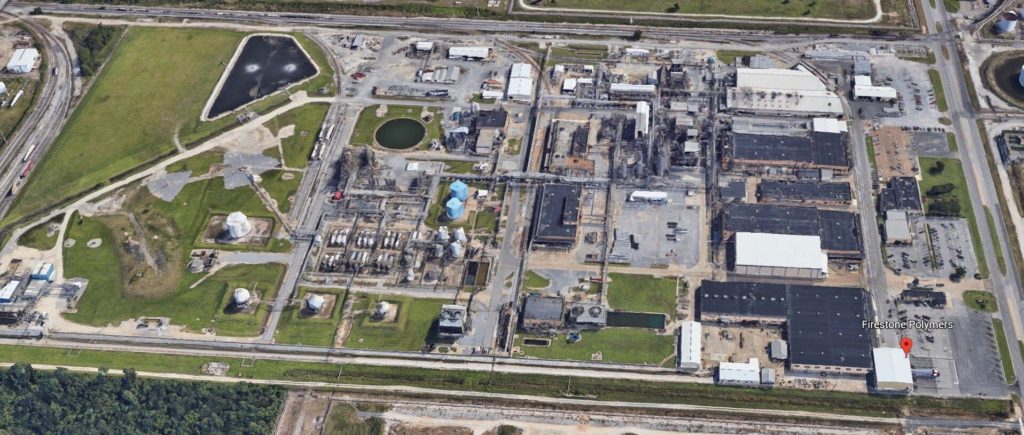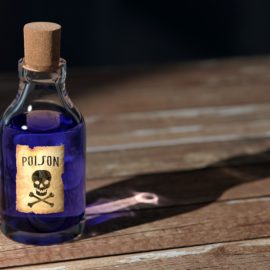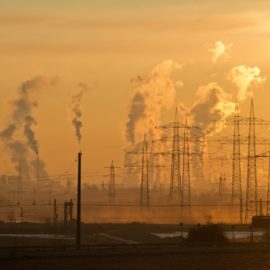
Google Earth
$3.35 Million fine for air pollution. Is this a sign that the EPA is back? Or will it be a one off? West of us in Calcasieu Parish so not Cancer Alley but it might be a sign of what will some.
Synthetic rubber manufacturer Firestone Polymers of Sulphur will pay a $3.35 million fine to settle allegations that it emitted illegally excessive amounts of toxic chemicals, federal and state officials said Tuesday. Acting on behalf of the federal Environmental Protection Agency and the state Department of Environmental Quality, the federal Department of Justice filed a complaint in U.S. District Court against Firestone in September, accusing it of emitting large amounts of nitrogen oxides, carbon monoxide and other hazardous chemicals, officials said. Those emissions ran afoul of the federal Clean Air Act and other anti-pollution laws. The DOJ also filed a federal consent decree in September detailing remedies Firestone must make; that settlement was reached after several years of negotiations between Firestone and the government. Under that decree, Firestone, a subsidiary of Bridgestone Americas Inc., will pay the EPA $2.1 million and pay DEQ $1.25 million. The company also will pay DEQ $654,125 to upgrade ambient air monitoring systems in southwest Louisiana as a “Beneficial Environmental Project,” an alternative penalty recently embraced by the Biden administration.
Nola,com
The plant will also have to monitor their emissions which only seem smart since that is what got them into trouble.
The decree also requires Firestone to meet federal and state emissions limits, comply with operating and maintenance requirements, and limit the amount of hazardous air pollutants released from facility dryers, heat exchangers, and flares, changes that will likely cost millions. The company has already complied with other requirements, including installing a new system to handle waste gases at the plant, EPA officials said. “This settlement requires Firestone to take concrete steps to reduce emissions of air pollutants from its manufacturing facility in Sulfur, Louisiana,” said Larry Starfield, Acting Assistant Administrator of EPA’s Office of Enforcement and Compliance Assurance. “This will result in cleaner air for communities in Southwest Louisiana, particularly for communities that have suffered a historically disproportionate burden from pollution.” “We plan to use this penalty and the beneficial environmental project funds from this consent decree to further enhance the environment in Louisiana,” DEQ Secretary Chuck Carr Brown added.
The monies DEQ gets will go into monitoring equipment.
DEQ will use its portion of the money to either relocate or upgrade the department’s existing Westlake ambient air monitoring site, upgrade and replace equipment at multiple monitoring sits in southwest Louisiana, or purchase field monitoring equipment for the department’s southwest regional office. “Before the settlement, Firestone Polymers took proactive corrective actions and measures to address emissions issues at the facility, which included installing a new regenerative thermal oxidizer to reduce emissions,” said a statement from Bridgestone officials. “This piece of equipment successfully started operation in March 2019. Since 2017, through the implementation of emission reduction projects, Firestone Polymers has reduced facility-wide volatile organic compound (VOC) emissions by approximately 98% and hazardous air pollutants by approximately 97%.”
The fine can be said to go back ten years or so as the plant has a history of poor emission control.
Many of Firestone’s problems date back almost 10 years, according to an April 2016 probe conducted by EPA’s National Enforcement Investigations Center. The inspectors found the company had not reported releases of 1,3-butadiene or n-hexane from cooling towers to Louisiana emergency officials as required by law at least a dozen times in 2013, 2014 and 2015. The unreported emissions totaled as much as 287 tons of the two chemicals. Hexane, a solvent, can affect the central nervous system, with chronic exposure linked to numbness of extremities, muscular weakness, blurred vision, headache and fatigue. Acute, short-term, exposure to 1-3 butadiene, a gas, can irritate eyes, nasal passages and lungs, and epidemiological studies of workers in rubber plants have shown an association between exposure to the gas and leukemia, according to the EPA.
THis impacts us as the winds blow east but mostly it raises the question of whether we will see the same here.



